#Bromocresol
Text

Bromocresol green (BCG) is a dye that is used in chemistry and analytical chemistry as a pH indicator in acid-base titration and in thin-layer chromatography staining solutions to visualize acidic compounds. Generally, the indicator can be prepared by dissolving BCG in an ethanol solution.
#Bromocresol Green#Bromocresol#phenolphthalein indicator#ph indicator#chemistry#analytical chemistry
5 notes
·
View notes
Text
Phenolphthalein, for example, changes a solution from colourless to pink as the pH of the solution changes over a range of 8.2 to 10.0 (see table 11.9).
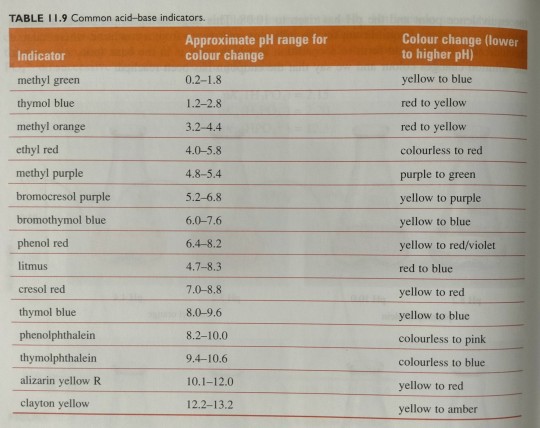
"Chemistry" 2e - Blackman, A., Bottle, S., Schmid, S., Mocerino, M., Wille, U.
#book quotes#chemistry#nonfiction#textbook#acid#base#indicator#color change#titration#methyl green#thymol blue#methyl orange#ethyl red#methyl purple#bromocresol purple#bromothymol blue#phenol red#litmus#cresol red#phenolphthalein#thymolphthalein#alizarin yellow r#clayton yellow
0 notes
Text
We’re gonna use Bromcresol Green as the indicator
Yea, that one in the blue carboy over there
Yea, the blue solution
Yes, it’s called Bromocresol Green
#watching everyone’s dismay that it’s blue is making me giggle#yes it’s green at ph 4#oh yea it can be yellow too#weeee#misc#chemistry#shitpost#sparky's brainrots
6 notes
·
View notes
Text
Methyl Diethyl Safranine, Methyl Diethyl Safranine Manufacturer, India
Methyl Diethyl Safranine : We are Methyl Diethyl Safranine Manufacturer, Methyl Diethyl Safranine Exporter, Supplier in Mumbai, India. Call Now.
Methyl Diethyl Safranine, Chemical, Chemicals, Electroplating Chemical, Electroplating Chemicals, Lab Chemical, Lab Chemicals, Laboratory Chemical, Laboratory Chemicals, Industrial Chemical, Industrial Chemicals, Safranine, Safranine O, 7 Diamino 2, 8 Dimethyl 5 Phenyl, Phenazinium Chloride, Diethyl Safranine, N Diethyl Phenosafranine, 3 Amino 7 dimethylamino, Basic Violet 5, Basic Violet 8, Thioflavin T, Basic Yellow, Basic Yellow I, O Cresolphthalein, Thymolphthalein, Biological Stain, Biological Stains, PH Indicator, PH Indicators, Lab Reagent, Lab Reagents, Laboratory Reagent, Laboratory Reagents, Dyes & Chemicals, Dye & Chemical, Dyes & Chemicals, Acid Fuchsin, Alizarin Yellow, Alizarin Yellow GG, Alizarin Yellow R, Aurin, Rosolic Acid, p-Rosolic Acid, Azure A, Azure B, Azure 11, Azure 11 Eosinate, Barium Diphenylamine Sulphonate, Basic Fuchsin, Biebrich Scarlet, Brilliant Green, Bromocresol Purple, Bromocresol Purple Sodium Salt, Bromophenol Blue, Bromophenol Blue Sodium Salt, Bromophenol Red, Bromothymol Blue, Bromothymol Blue Sodium Salt, Calcon, Solochrome Dark Blue, Calconcarboxylic Acid, Calmagite, Carbol Fuchsin, Chromotrope 2B, Chromotrope 2R, O Cresolphthalein Complexone, Cresol Red, Cresol Red Sodium Salt, 2:6 Dichlorophenol Indophenol Sodium, 4',5' Dibromofluorescein, Dimethylglyoxime GR, Eosin Blue, Eosin Yellow, Free Acid Eosin Yellow, Water Soluble Eosin Yellow, Eriochrome, Solochrome Black T, Ethyl Orange, Evans Blue, Fluorescein, Fluorescein Complexone, Calcein, Fluorescein Sodium, Giemsa Stain, Hydroxy Naphthol Blue, Indoine Blue, Leishman Stain, May & Grunwald Stain, Methyl Blue, Aniline Blue W/S, Methylene Violet 3Rax, Methyl Orange, Methyl Red, Methylthymol Blue Complexon, Methyl Violet, Naphthol Green B, Naphtholphthalein, 1 Naphtholphthalein, Neutral Red, Orange G, Nitroso R Salt Gr, Indole 3 Acetic Acid, New Fuchsin, asia, asian, india, indian, mumbai, maharashtra, industrial, industries, thane, navi mumbai, pune, nashik, aurangabad, ratnagiri, nagpur, ahmednagar, akola, amravati, chandrapur, dhule, jalgaon, raigad, sangli, satara, belgaum, kolhapur, belgaon
0 notes
Text
Bromocresol Green (Highly Pure)
Bromocresol Green (Highly Pure)
Catalog number: B2013043
Lot number: Batch Dependent
Expiration Date: Batch dependent
Amount: 1 g
Molecular Weight or Concentration: 698.0 g/mol
Supplied as: Lyophilized Powder
Applications: molecular tool for various biochemical applications
Storage: RT
Keywords: C21H14Br4O5S
Grade: Biotechnology grade. All products are highly pure. All solutions are made with…

View On WordPress
0 notes
Text
Buy Bromocresol Green Free Acid - Get the Best Price for Bromocresol Green Free Acid for Sale
Bromocresol Green Free Acid (BCG) is a pH indicator widely used in laboratory applications. It changes color from yellow to blue over a pH range of 3.8 to 5.4. To ensure accurate results, it's important to buy high-quality BCG from a reputable supplier. The price may vary, but you can find the best price when you buy Bromocresol Green Free Acid for sale from a reputable source.
#BromocresolGreenFreeAcid#buyBromocresolGreenFreeAcid#BromocresolGreenFreeAcidprice#BromocresolGreenFreeAcidforsale
0 notes
Link
Gsp chem one of the best Ph indicator manufacturer company in India.

Chemicals and substances that impart color including soluble dyes and insoluble pigments. They are used in INKS; PAINTS; and as INDICATORS AND REAGENTS.It is used in microbiology in the Voges-Proskauer test to identify bacteria that produce stable acids through mixed acid fermentation of glucose.
For more : http://gspchem.com/
Call : +91 2525 661040/645115
#pH indicators manufacturer and exporter#methyl red manufacturer and exporter#methyl orange manufacturer and exporter#bromophenol blue manufacturer and exporter#thymolphthalein manufacturer and exporter#bromocresol green manufacturer and exporter#bromocresol purple manufacturer and exporter#thymol blue manufacturer and exporter#bromothymol blue manufacturer and exporter#phenol red manufacturer and exporter#neutral red manufacturer and exporter#Giemsa stain manufacturer and exporter#wright stain manufacturer and exporter#azur manufacturer and exporter#m-cresol purple manufacturer and exporter#Xylenol Orange manufacturer and exporter#o-Cresolphthalein manufacturer and exporter#2 6-Dichlorophenol Indophenol Sodium Salt manufacturer and exporte#Alizarin Red S manufacturer and exporter#Chlorophenol Red manufacturer and exporter#Rose Bengal manufacturer and exporter
0 notes
Photo

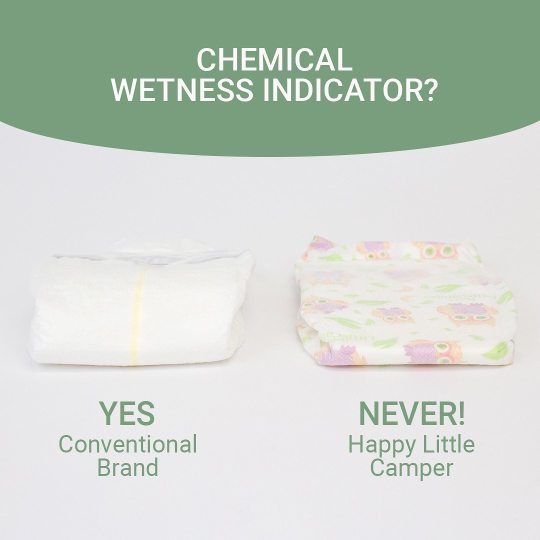
hilaryduff: In case you’re wondering why we don’t have wetness indicators on our Happy Little Camper Diapers, here’s a list of some of the possible ingredients other diapers use: Bromocresol Green, Bromophenol Blue and Ethyl Red. Do a quick google search on these ingredients and you definitely won’t want them near your baby’s booty! Happy Little Camper uses ONLY lead-free safe inks to print our diapers, and our cosy cotton-blend topsheet, which means soft, dry, safe protection for your little one. Use code Hilary15 for 15% off your first monthly membership box! #HLCMom #HLCBaby
2 notes
·
View notes
Text
Fluoride Ion Selective Electrodes Market Research Report 2021-2028
The Global Fluoride Ion Selective Electrodes Market is expected to grow at a CAGR of 5.1% during the forecast period (2021-2028). Increasing industrialization coupled with the growing need for quality control in factories is major factors driving the growth of this market. The fluid membrane-type dominates over other types due to its robust nature and high level of accuracy as compared to PVC membranes which are delicate and prone to damage under rough handling conditions.
Fluoride ion-selective electrodes are electronic devices that use a specific electrochemical reaction to measure the concentration of fluoride ions in water samples. They are used as an alternative method for measuring the levels of fluoride in drinking and other natural waters, which is usually done by taking measurements with absorbent colorimetric test strips or liquid reagents such as those containing sulfuric acid.
On the basis of Type, Global Fluoride Ion Selective Electrodes Market is segmented into Liquid Membrane, PVC Membrane.
Liquid Membrane:
The liquid membrane, which is made of a permeable material that stops the passage of any ion except for fluoride ions, has emerged as one of the most widely used types in the Global Fluoride Ion Selective Electrodes Market. These electrodes are used to measure pH and they can be also classified into two groups- acidimetric and volumetric measurement methods. Volumetric measurements employ an electric current producing chemical reactions with electrode materials such as Raney nickel or porous platinum gauze pads at high temperatures while acidimetric use indicator dyes- bromocresol green+ hydrochloric acid (BCG) compound or phenolphthalein + sulfuric acid (PPS).
PVC Membrane:
The PVC membrane, which is commonly used for industrial use. These electrodes are flexible and can be easily wrapped around a cylindrical rod or coil holder using an insulating material such as glass wool. They require a high voltage power supply for operation because they generate very low current levels that can corrode platinum gauze rods rapidly at atmospheric pressure of about 0.01 volts per centimeter (Vpc).
On the basis of Application, Global Fluoride Ion Selective Electrodes Market is segmented into Industrial Use, Laboratory Use, Others.
Industrial Use:
Industrial use of fluoride ion-selective electrodes is more likely to be used in the manufacturing industries where there are continuous processes that need monitoring such as steel, cement, and aluminum. The process requirements for these industries include fast response time, accuracy within a certain range, and wide temperature ranges (>-200°C). Thus they can choose either a liquid membrane or a PVC membrane depending on what they require from their sensors.
Laboratory Use:
The laboratory use of fluoride ion-selective electrodes is more likely to be used in water testing laboratories where the process requirements are specific and include accuracy, wide ranges of temperature (-200°C) as well as fast response time. These electrodes can either be liquid membranes or PVC membranes depending upon what they need from their sensors.
On the basis of Region, Global Fluoride Ion Selective Electrodes Market is segmented into North America, Latin America, Europe, Asia Pacific, and the Middle East & Africa.
North American industrial use of fluoride ion-selective electrodes is more likely to be used for applications such as water quality control at drinking water purification plants or wastewater treatment facilities where there is continuous monitoring requiring fast response time, accuracy within a certain range, and wide temperature ranges (> -200°C). The Latin American region is characterized by the presence of countries that are starting to develop their industries. These sensors can either be liquid membranes or PVC membranes depending on what they need from their sensors. European countries have been using fluoride ion-selective electrodes for laboratory use with acidimetric devices being the most commonly used type due to cost-effectiveness. Asia Pacific region is expected to grow considerably with rapid economic growth rates coupled with an increased demand for safe drinking water. This will help increase the usage of fluoride ion-selective electrodes in the region. The Middle East and African region have been witnessing significant growth due to the developments in their industries. Fluoride ion-selective electrodes are likely to be used for industrial applications such as water quality control at drinking water purification plants or wastewater treatment facilities where there is continuous monitoring requiring fast response time, accuracy within a certain range, and wide temperature ranges (> -200°C). These sensors can either be liquid membranes or PVC membranes depending on what they need from their sensors.
The growth factor of the Global Fluoride Ion Selective Electrodes Market:
- Increasing demand for fluoride ion-selective electrodes in the Asia Pacific region is a major driving factor of the Global Fluoride Ion Selective Electrodes market.
- The growth factor of the Global Fluoride Ion Selective Electrodes Market is attributed to an increase in industrial and laboratory uses.
- Increasing awareness about mercury contamination poses a major threat for potential customers, especially with the increasing number of bans on tetraethyl lead (TEL) by auto manufacturers are also driving up demand for this product.
Dataintelo published a new report titled “Fluoride Ion Selective Electrodes Market research report which is segmented by Types (Liquid Membrane, PVC Membrane), By Applications (Industrial Use, Laboratory Use, Others), By Players/Companies OMEGA Engineering, Hach, Bante Instruments, HORIBA, Metrohm”.
The report covers comprehensive data on emerging trends, market drivers, growth opportunities, and restraints that can change the market dynamics of the industry. It provides an in-depth analysis of the market segments which include products, applications, and competitor analysis.
Global Fluoride Ion Selective Electrodes Market Report Segments:
The market is segmented by Type Liquid Membrane, PVC Membrane and By Application Industrial Use, Laboratory Use, Others.
Some of the companies that are profiled in this report are:
OMEGA Engineering
Hach
Bante Instruments
HORIBA
Metrohm
Fluoride Ion Selective Electrodes Market research report delivers a close watch on leading competitors with strategic analysis, micro and macro market trend and scenarios, pricing analysis and a holistic overview of the market situations in the forecast period. It is a professional and a detailed report focusing on primary and secondary drivers, market share, leading segments and geographical analysis. Further, key players, major collaborations, merger & acquisitions along with trending innovation and business policies are reviewed in the report.
Key Benefits for Industry Participants & Stakeholders:
Industry drivers, restraints, and opportunities covered in the study
Neutral perspective on the market performance
Recent industry trends and developments
Competitive landscape & strategies of key players
Potential & niche segments and regions exhibiting promising growth covered
Historical, current, and projected market size, in terms of value
In-depth analysis of the Fluoride Ion Selective Electrodes Market
Overview of the regional outlook of the Fluoride Ion Selective Electrodes Market:
Based on region, the market is segmented into North America, Europe, Asia Pacific, Latin America and Middle East & Africa (MEA). North America region is further bifurcated into countries such as U.S., and Canada. The Europe region is further categorized into U.K., France, Germany, Italy, Spain, Russia, and Rest of Europe. Asia Pacific is further segmented into China, Japan, South Korea, India, Australia, South East Asia, and Rest of Asia Pacific. Latin America region is further segmented into Brazil, Mexico, and Rest of Latin America, and the MEA region is further divided into GCC, Turkey, South Africa, and Rest of MEA.
Read More at: https://dataintelo.com/report/global-fluoride-ion-selective-electrodes-market/
Highlights of The Fluoride Ion Selective Electrodes Market Report:
The market structure and projections for the coming years.
Drivers, restraints, opportunities, and current trends of Fluoride Ion Selective Electrodes Market.
Historical data and forecast.
Estimations for the forecast period 2028.
Developments and trends in the market.
By Type:
Liquid Membrane
PVC Membrane
By Application:
Industrial Use
Laboratory Use
Others
Market scenario by region, sub-region, and country.
Market share of the market players, company profiles, product specifications, SWOT analysis, and competitive landscape.
Analysis regarding upstream raw materials, downstream demand, and current market dynamics.
Government Policies, Macro & Micro economic factors are also included in the report.
We have studied the Fluoride Ion Selective Electrodes Market in 360 degrees via. both primary & secondary research methodologies. This helped us in building an understanding of the current market dynamics, supply-demand gap, pricing trends, product preferences, consumer patterns & so on. The findings were further validated through primary research with industry experts & opinion leaders across countries. The data is further compiled & validated through various market estimation & data validation methodologies. Further, we also have our in-house data forecasting model to predict market growth up to 2028.
How you may use our products:
Correctly Positioning New Products
Market Entry Strategies
Business Expansion Strategies
Consumer Insights
Understanding Competition Scenario
Product & Brand Management
Channel & Customer Management
Identifying Appropriate Advertising Appeals
Reasons to Purchase the Fluoride Ion Selective Electrodes Market Report:
The report includes a plethora of information such as market dynamics scenario and opportunities during the forecast period
Segments and sub-segments include quantitative, qualitative, value (USD Million,) and volume (Units Million) data.
Regional, sub-regional, and country level data includes the demand and supply forces along with their influence on the market.
The competitive landscape comprises share of key players, new developments, and strategies in the last three years.
Comprehensive companies offering products, relevant financial information, recent developments, SWOT analysis, and strategies by these players.
0 notes
Link
Bromocresol green is a color of the triphenylmethane family (triarylmethane colors). It has a place with a class of colors called sulfonephthalein. It is utilized as a pH pointer in applications, for example, development vehicles for microorganisms and titrations.Read more,
0 notes
Text
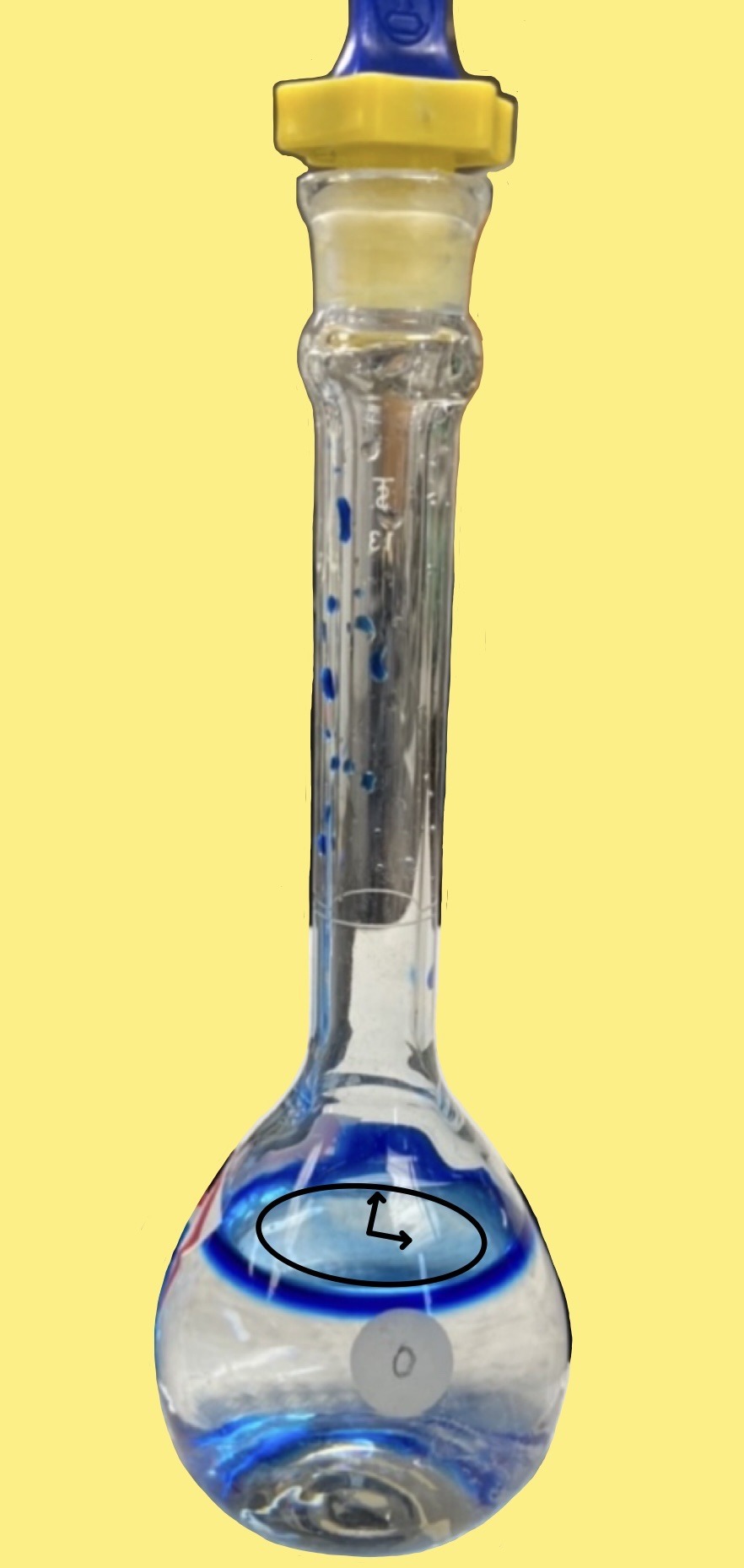
The clock strikes 3
Class ends in 20 minutes
I’m running behind
My feet ache
My stomach groans
“Make observations on your mixture”
I pause
This is actually really beautiful
Bromocresol green
0 notes
Text
Effect of Origanum vulgare Extract on Immune Responses and Heamatological Parameters of Rainbow Trout (Oncorhynchus mykiss)- Juniper Publishers
Abstract
In this study, Origanum vulgare extract was used to evaluate its effects on immune responses and hematological parameters of rainbow trout (Oncorhynchus mykiss). Six hundred (600) averages mean weight 13±0.05g rainbow trout (Oncorhynchus mykiss) were randomly allocated into two groups including placebo-treated group (control), and Origanum vulgare extract-treated group, each of three replicates. The fishes were hand-fed once a day with diet medicated placebo or Origanum vulgare extract (OE) at a rate of 1% of feed weight in the first feeding for 8 weeks. At the end of every two weeks 24hrs after feeding, fish were bled from caudal vein and blood samples were analyzed for some of hematological and immunological parameters. The results showed that serum total protein, albumin and globulin, respiratory burst activity, phagocytic activity and serum lysozyme activity vary among the two treatment groups which were found to be higher in OE-treated group (P<0.05). It was concluded that supplementation of OE at a rate of 1% registered higher immunological responses. Therefore, dietary inclusion of OE could improve nonspecific immune responses in rainbow trout. Future studies to determine optimal herb mixtures and dietary levels should be conducted.
Keywords: Herbal immunostimulant; Iranian medicinal plants; Origanum vulgare; Fish
Introduction
Major targets in the aquaculture industry are to maintain fish health as well as to improve fish performance. The use of plant extracts in practical diets for fish is a very topical concept in aquaculture industry. One of the most important aspects in rainbow trout farming is the nutrition factor. It can influence the performance as well as the health status of the cultured fish. Origanum vulgare is a member of the Labiatae family of plants. It is an aromatic plant with a wide distribution throughout the Mediterranean area and Asia [1]. The essential oil obtained from O. vulgare subsp. hirtum plant by a steam distillation process comprises more than 20 ingredients, most of which are phenolic antioxidants [2]. Major components are carvacrol and thymol that constitute about 78 to 82% of the total oil [3]. It has been suggested that the essential oil derived from oregano possess in vitro antimicrobial [4,5] antifungal [6], insecticidal [7] and antioxidant [8] properties. These properties are mainly attributed to carvacrol and thymol. The activity of other constituents such as the two monoterpene hydrocarbons, γ-terpinene and p-cymene, that often constitute about 5 and 7% of the total oil, respectively [3] is uncertain.
Materials and Methods
Preparation of Origanum vulgare extract
The plant of Origanum vulgare was procured from local store and plant species was identified and confirmed by a botanist in Institute of Medicinal Plants. The dried air parts were collected and washed in sterile distilled water. The samples were separately shade-dried for 10 day till weight constancy was achieved. Then, the samples were powdered in an electric blender. The extract was prepared with the standard method of percolation. To do this, chopped dried air parts of plant in 80% ethanol were percolated for 72 hours. Then, the slurry was filtered with Whattman No. 1 filter paper and centrifuged for 5min at 5000rpm. The filtrate obtained from ethanol using a rotary device, the excess solvent was separated from the extract. These crude extract was stored at 4 °C until use.
Supplementation ofthe normal diet with dried Origanum vulgare extract
The formulated fish feed was prepared using the normal fish diet (50% crude protein, 18% crude lipid, 1.9% fiber, 1.3% total phosphorus, 8.3% ashes, and 14.8% nitrogen free extract) with dried Origanum vulgare extract or placebo at a ratio 1% of weight food and mixing part by part in a drum mixer. Sufficient water along with the oil ingredients were then added to make a paste of each diet. After it was pelleted and allowed to cool dry. The pellets were air dried and stored in air tight containers until fed.
Fish and experimental conditions
600 rainbow trout weighing 13±0.05 were used. All experiments were carried out in 1,000 liter round concrete ponds with a continuous water flow of 2.5 liter per second. The fish were kept at an ambient, including uncontrolled water temperature of 15±1 °C, dissolved oxygen of 7.2±0.2mg l-1 and pH 8±0.3. After 2 weeks adaptation, fish were randomly allotted in two groups including an experimental group and a control group, in triplicate was maintained in 6 concrete ponds each containing 100 fish. Each group was hand-fed once a day with diet medicated 1% of Origanum vulgare extract, or placebo (70% lactose, 10 % starch and 20 % talc) prepared in the laboratory and three times with normal diet at a rate 2% of body weight for 10 weeks.
Bleeding and serum collection
During bleeding, fish were rapidly netted, tranquillized with 50mg/l of tricaine methane sulfonate (MS222, Sigma chemical Co. St. Louis, MO, USA). Fish were bled from caudal vein using 1ml insulin syringe fitted with 24 gauge needle. To minimize the stress to fish, 1ml of blood was drawn and the whole bleeding procedure was completed within 1min. A total number of 15 blood samples were collected from 15 fish in each group (5 samples from each replicate) at the end of every 2 weeks, 24h after final feeding period. The blood pooling of 5 fish from each replicate divided into 2 haves. Half collected in serological tubes containing a pinch of lithium heparin powder, shaken gently and kept at 4 °C to test hematological parameters. Other half collected in tubes without of anticoagulant and allowed to clot at 4 °C for 2hrs to test serological parameters. The clot was the spun down at 2000rpm for 10min to separate the serum. The serum collected by micropipette and was stored in sterile Eppendorf tubes at -20 °C until used for assay.
Hematological assay
Blood sample was analyzed with routine methods adopted in fish hematology [9]. The total red blood cell counts (RBC x106/μl) were determined in a 1:200 dilution of the blood sample in Hayem's solution and total white blood cell counts (WBC x103/μl) in a 1:20 dilution of the blood sample with a Neubauer hemocytometer. The hematocrit (Hct) and leucocrit percentages were determined in duplicate by using micro hematocrit-heparinized capillary tubes of 75μl volume and a micro hematocrit centrifuge at 15000rpm for 5min [10]. The percentages of erythrocyte (hematocrit) and leucocyte (leucocrit) volumes were calculated by overlaying the tubes on a sliding scale hematocrit reader.
The hemoglobin (Hbg/dl) concentrations were determined by the cyanomethaemoglobin method [11] using a haemoglobin reagent set (Ziest Chem Diagnostics). The all the values of red blood cell indices, the mean values of cell haemoglobin (MCH pg), cell hemoglobin concentration (MCHC %), and cell hemoglobin volume (MCV fl) were calculated according to Wintrobe formulae [12]. The differential leukocytes count was carried out using blood smears stained with Wright-Giemsa. The percentage composition of leukocytes was determined based on their identification characters listed by Ivanava [13].
Biochemical assay
Serum total protein content was estimated photo metrically by citrate buffer and bromocresol green (BCG) dye binding method [14] using the kit (total protein and albumin kit, Pars Azmun Company, Iran). Albumin was determined BCG binding method. The absorbance of standard and test were measured against blank in a spectrophotometer at 546nm. Globulin level was calculated by subtracting albumin values from total serum protein. Albumin/globulin (A/G) ratio was calculated by diving albumin values by globulin values.
Immunological assay
Separation of leukocytes from the blood
Leucocytes for assay were separated from each blood sample by density-gradient centrifugation. One milliliter of histopaque 1.119 (Sigma) containing 100μl of bactohemagglutination buffer, pH 7.3 (Difco, USA) was dispensed into siliconised tubes. 1ml of a mixture of 1.077 density histopaque and hemagglutination buffer and 1ml of blood was carefully layered on the top. The sample preparations were centrifuged at 2500rpm for 15min at 4 °C. After centrifugation, plasma was collected and stored at -80 °C for future analysis; separated leukocytes were gently removed and dispensed into siliconised tubes, containing phenol red free Hanks Balanced Salt Solution (HBSS, Sigma). Cells were then washed twice in HBSS and adjusted to 2*106 viable cells/ml.
Respiratory burst activity
Respiratory burst activity of isolated leukocytes was quantified by reduction of ferricytochrome C [15]. Briefly, 100μl of leukocyte suspension and an equal volume of cytochrome C (2mg/l in phenol red free HBSS) containing phorbol 12-myristate 13-acetate (PMA, Sigma) at 1μg/ml were placed in triplicate in micro titer plates. In order to test specificity, another 100μl of leukocyte suspensions and solutions of cytochrome c containing PMA and superoxide dismutase (SOD, Sigma) at 300U/ml were prepared in triplicate in micro titer plates. Samples were then mixed and incubated at room temperature for 15min. Extinctions were measured at 550nm against a cytochrome C blank in a multiscan spectrophotometer. Readings were converted to nmoles O2 by subtracting the O.D. of the PMA/SOD treated supernatant from that treated with PMA given alone for each sample, and converting O.D. to n moles O2 by multiplying by 15.87. Final results were expressed as nano moles O2 produced per 105 blood leukocytes.
Phagocytosis assay
Phagocytosis activity of blood leukocytes was determined spectrophotometrically according to Seeley et al. [16]. This assay involves the measurement of congo red-stained yeast cells which have been phagocytised by cells. To perform the assay, 250μl of the leukocyte solution was mixed with 500μl of the congo red- stained and autoclaved yeast cell suspension (providing a yeast cell: leukocyte ratio of 40:1). The mixtures were incubated at room temperature for 60min. Following incubation, 1ml ice-cold HBSS was added and1 ml of histopaque (1.077) was injected into the bottom of each sample tube. The samples were centrifuged at 2500rpm for 5min to separate leukocytes from free yeast cells. Leukocytes were harvested and washed two times in HBSS. The cells then were resuspended in 1ml trypsin-EDTA solution (5.0g/l trypsin and 2.0g/l EDTA, Sigma) and incubated at 37 °C overnight. The absorbance of the samples was measured at 510nm using trypsin-EDTA as a blank.
Serum lysozyme assay
In this study, an assay based on the lysis of Micrococcus lysodeikticus was used to determining the lysozyme activity. Serum lysozyme activity was measured spectrophotometrically according to the method Parry et al. [17]. Briefly, 0.02% (w/v) lyophilized Micrococcus lysodeikticus in 0.05mM solution phosphate buffer (pH 6.2) was used as substrate. 10μl of fish serum was added to 250μl of bacterial suspension and reduction in absorbance at 490nm was determined after 0.5 and 4.5min of incubations at 25 °C using a microplate reader. One unit of lysozyme activity was defined as the amount of enzyme causing a decrease in absorbance of 0.001 per min.
Statistical analysis
All results for each parameter measured were expressed as means±standard errors, and were compared at each time point using Student's t-test for independent data. Significant differences between experimental groups were expressed at a significance level of p <0.05. All analyses were carried out on 15 fish per group.
Results
Hematological analysis
Dietary Origanum vulgare extract incorporated test diets had no significant (p <0.05) effect on red blood cell count (RBC), white blood cell count (WBC), differential leukocytes count (monocyte, lymphocyte and neutrophile), hematocrit (Hct), hemoglobin (Hb), the all the values of red blood cell indices, the mean values of cell hemoglobin (MCH pg), cell hemoglobin concentration (MCHC %), and cell hemoglobin volume (MCV fl) at the end of none of the identical two weeks after feeding in compared to placebo group (Table 1).
Data are expressed as mean±SE (n=15). No significant differences were observed in the Origanum vulgare treated groups relative to the placebo group at the end of the identical every two weeks after feeding (P>0.05). Neut: neutrophil; Mon: Monocyte; Lymp: Lymphocyte.
Biochemical analysis
Origanum vulgare extract had significant (P<0.05) effect in increase of total protein (TP), albumin (AL), and globulin (GL), at the end of the identical every two weeks after feeding in compared to placebo group (Table 2). The maximum level of total protein was recorded on week 2 of exposure duration. Similarly, albumin and globulin contents were significantly higher in Aloe vera group as compared to placebo group. However, albumin/globulin ratio was not exhibited significant differences in two weeks after feeding in compared to placebo group (p>0.05; compared to placebo group at the end of the identical every Table 2).
Data are expressed as mean±SE (n=15). *: P<0.05 compared with the
Immunological analysis
Respiratory burst activity
The respiratory burst activity significantly (P<0.05) enhanced in fish fed with 1% of Origanum vulgare extract supplementation feed at the end of the identical every two weeks after feeding in compared to placebo group (Figure 1).
Phagocytic activity of blood leucocytes significantly (P<0.05) enhanced in fish treated with 1% of Origanum vulgare extract supplementation feed at the end of the identical every two weeks after feeding in compared to placebo group (Figure 2).
Lysozyme activity
Lysozyme activity significantly (P<0.05) enhanced in fish fed with 1% of Origanum vulgare extract supplementation feed at the end of the identical every two weeks after feeding in compared to placebo group (Figure 3).
Discussion
The present study projects the impact of dried Origanum vulgare extract on the hematological and immunological responses in rainbow trout (Oncorhyncous mykiss). The hematological parameters in the present investigation such as RBC, WBC, differential leukocytes counts, hemoglobin, hematocrit, the all of the values of red blood cell indices (MCH, MCHC and MCV) were no significant differences at the end of none of the identical every two weeks after feeding when compared to control group. These observations are in agreement with the obtained results of other researchers, who reported that rainbow trout treated with dietary Aloe vera supplementation were no significant differences in RBC and Hct [18], or RBC and Hb [19] among the groups.
In the present study, the dietary Origanum vulgare extract supplementation enhanced total plasma protein, albumin and globulin values in comparison with control group. Similar results were reported in rainbow trout fed with garlic [20], ginger [21], lipopolysaccharide [22], Laurus nobilis [23], and Coggyria coggyria [24]. Serum proteins are various humoral elements of the non-specific immune system, measurable total protein, albumin and globulin levels suggest that high concentrations are likely to be a result of the enhancement of the non-specific immune response of fish. So, this study revealed that Origanum vulgare extracts incorporated diets helped to increase the humoral elements in the serum. Respiratory burst activity is considered as an important indicator of non-specific defense in fish, which is a measure of the increase of oxidation level in phagocytes stimulated by foreign agents [25]. An enhancement of respiratory burst activity has been identified in the present study, that it is in agreement many of studies with dietary immunostimulants [23,26]. Respiratory burst and phagocytosis response by phagocytes in blood present a major antibacterial defense mechanism in fish [27]. Phagocytosis is one of the most important processes in fish. The main cells involved in phagocytosis in fish are neutrophils and macrophages. These cells remove bacteria mainly by the production of reactive oxygen species (ROS) during a respiratory burst. In addition, neutrophils possess myeloperoxidase in their cytoplasmic granules, which in the presence of halide and hydrogen peroxidase kills bacteria by halogenations of the bacterial cell wall. Moreover, these cells have lysozymes and other hydrolytic enzymes in their lysosomes [28]. Similarly, macrophages can produce nitric oxide in mammals and can be as potent as antibacterial agents, peroxynitrates and hydroxyl groups. Phagocytic activity of leucocytes in rainbow trout was enhanced by dietary dose of powdered ginger rhizome [29,30]. Also, in this study an increasing trend in lysozyme activity has been shown which is in agreement with several reports indicating the role of herbal immunostimulants in enhancing lysozyme activity [31-33]. Lysozyme is a humoral component of the non-specific defense mechanism which has the ability to prevent the growth of bacteria by splitting p-1,4 glycosidic bonds in the peptidoglycan of bacterial cell walls, resulting in bacteriolysis. In conclusion, supplementation of OE in aquaculture diets would be use to enhance non-specific immune system in fish. Therefore, further studies are necessary for effective use of Origanum vulgare extract with optimal dose, suitable duration, and method of administration.
For more about Juniper Publishers please click on: https://twitter.com/Juniper_publish
For more about Oceanography & Fisheries please click on: https://juniperpublishers.com/ofoaj/index.php
#Fish production#fisheries research#Carbon Cycle#Juniper publishers Address#Juniper publishers e-books
0 notes
Text
Safranin, Safranine O Manufacturer, Supplier, Exporter, Mumbai, India
Safranin, Safranine O Manufacturer, Supplier, Exporter, Mumbai, India.
Chemical, Chemicals, Electroplating Chemical, Electroplating Chemicals, Lab Chemical, Lab Chemicals, Laboratory Chemical, Laboratory Chemicals, Industrial Chemical, Industrial Chemicals, Safranine, Safranine O, 7 Diamino 2, 8 Dimethyl 5 Phenyl, Phenazinium Chloride, Diethyl Safranine, N Diethyl Phenosafranine, 3 Amino 7 dimethylamino, Basic Violet 5, Basic Violet 8, Thioflavin T, Basic Yellow, Basic Yellow I, O Cresolphthalein, Thymolphthalein, Biological Stain, Biological Stains, PH Indicator, PH Indicators, Lab Reagent, Lab Reagents, Laboratory Reagent, Laboratory Reagents, Dyes & Chemicals, Dye & Chemical, Dyes & Chemicals, Acid Fuchsin, Alizarin Yellow, Alizarin Yellow GG, Alizarin Yellow R, Aurin, Rosolic Acid, p-Rosolic Acid, Azure A, Azure B, Azure 11, Azure 11 Eosinate, Barium Diphenylamine Sulphonate, Basic Fuchsin, Biebrich Scarlet, Brilliant Green, Bromocresol Purple, Bromocresol Purple Sodium Salt, Bromophenol Blue, Bromophenol Blue Sodium Salt, Bromophenol Red, Bromothymol Blue, Bromothymol Blue Sodium Salt, Calcon, Solochrome Dark Blue, Calconcarboxylic Acid, Calmagite, Carbol Fuchsin, Chromotrope 2B, Chromotrope 2R, O Cresolphthalein Complexone, Cresol Red, Cresol Red Sodium Salt, 2:6 Dichlorophenol Indophenol Sodium, 4',5' Dibromofluorescein, Dimethylglyoxime GR, Eosin Blue, Eosin Yellow, Free Acid Eosin Yellow, Water Soluble Eosin Yellow, Eriochrome, Solochrome Black T, Ethyl Orange, Evans Blue, Fluorescein, Fluorescein Complexone, Calcein, Fluorescein Sodium, Giemsa Stain, Hydroxy Naphthol Blue, Indoine Blue, Leishman Stain, May & Grunwald Stain, Methyl Blue, Aniline Blue W/S, Methylene Violet 3Rax, Methyl Orange, Methyl Red, Methylthymol Blue Complexon, Methyl Violet, Naphthol Green B, Naphtholphthalein, 1 Naphtholphthalein, Neutral Red, Orange G, Nitroso R Salt Gr, Indole 3 Acetic Acid, New Fuchsin, asia, asian, india, indian, mumbai, maharashtra, industrial, industries, thane, navi mumbai, pune, nashik, aurangabad, ratnagiri, nagpur, ahmednagar, akola, amravati, chandrapur, dhule, jalgaon, raigad, sangli, satara, belgaum, kolhapur, belgaon.
0 notes
Text
A series of solutions containing NaOH, Na2CO3, and NaHCO3, alone or in compatible combination, was titrated with 0.1202 M HCl. Tabulated below are the volumes of acid needed to titrate 25.00-ml portions of each solution to (1) a phenolphthalein and (2) a bromocresol green end point. Use this information to deduce the composition of the solutions. In addition, calculate the mass in milligrams of each solute per milliliter of solution
A series of solutions containing NaOH, Na2CO3, and NaHCO3, alone or in compatible combination, was titrated with 0.1202 M HCl. Tabulated below are the volumes of acid needed to titrate 25.00-ml portions of each solution to (1) a phenolphthalein and (2) a bromocresol green end point. Use this information to deduce the composition of the solutions. In addition, calculate the mass in milligrams of each solute per milliliter of solution
PLEASE ANSWER ALL QUESTIONS (A-E, PLEASE SHOW STEP BY STEP CALCULATION (NOT THE EXCEL SHEET)
THIS IS AN ANALYTICAL CHM QUESTION
THANK YOU
. A series of solutions containing NaOH, Na2CO3, and NaHCO3, alone or in compatible combination, was titrated with 0.1202 M HCl. Tabulated below are the volumes of acid needed to titrate 25.00-ml portions of each solution to (1) a phenolphthalein and (2) a…
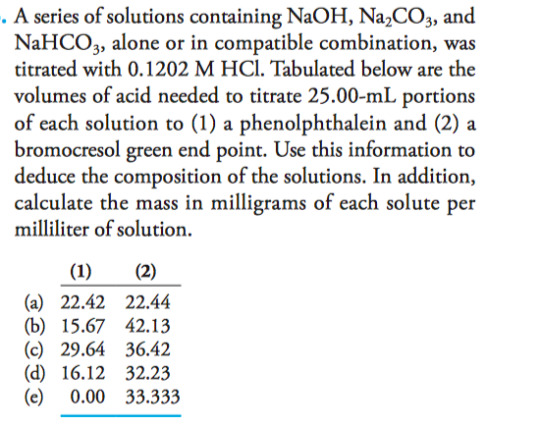
View On WordPress
0 notes
Photo
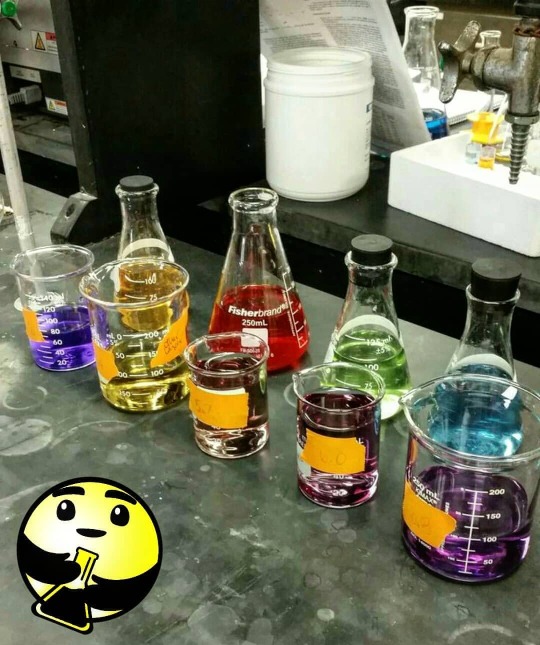
¡Las consecuencias de las soluciones de encontrar el pKa de bromocresol púrpura ! https://www.instagram.com/p/B_6LW99HUg5/?igshid=1cy0hxqbovka6
0 notes